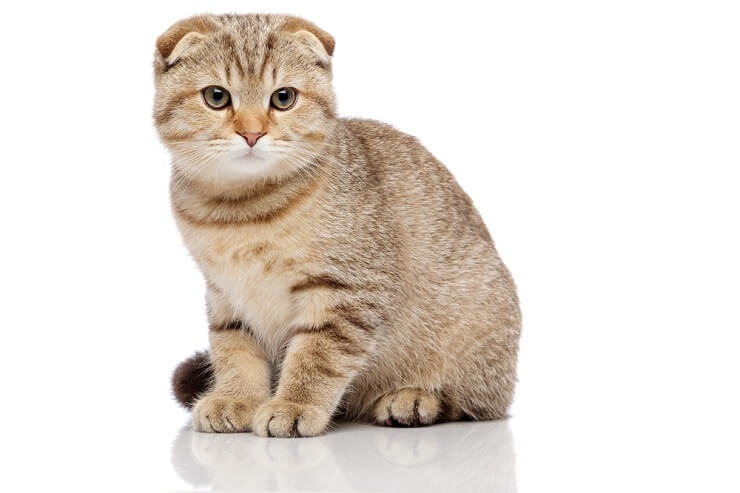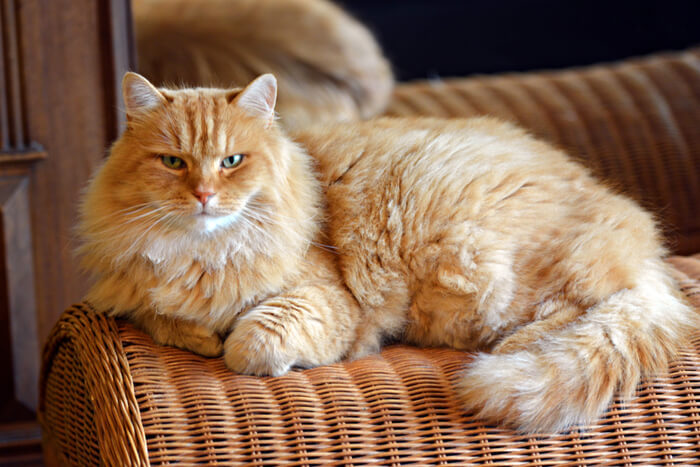10 Fun Facts about Your Silver Tabby Cat
This page contains affiliate links. We may earn money or products from the companies mentioned in this post through our independently chosen links, which earn us a commission.

Most cat breeds come in a wide range of coat colors and patterns including the tabby coat pattern.
A tabby cat has a distinct “M” marking on the forehead and expressive marking on the face and around the eyes.
The four main color groups that tabby cats come in are brown, cream, red, and silver. To know your tabby cat’s main coat color examine the hair at the tip of the tail. The tail tip should have a solid color for the full length of the hair and white roots on the ground hair.
Silver Tabby Cats

Silver tabbies originated from the UK. They have a striking silver coat and green eyes. Silver tabbies have dark gray spots and swirls on their light-colored coat. Their coat colorations range from nearly white to extremely dark gray. Common silver tabby coat colors include blue silver, cream silver, and red silver.
While a majority of silver tabbies are shorthaired, some are long-haired.
The Britannica tabby which is a cross of the British shorthair and the Persian cat is the most common long-haired silver tabby. The Maine Coon and the Turkish van are other long-haired cat breeds that come in silver tabby coats.
Even though silver tabbies come from a combination of several cat breeds, generally these cats can adapt to different climatic conditions. It’s also relatively easy to maintain a silver tabby since most require grooming only once or twice a week depending on the length of the coat.
Silver tabbies are elegant and beautiful furballs that enjoy spending time with humans because of their affectionate and playful nature. Most silver tabbies also love attention and they make loyal and loving companions.
One of the most famous silver tabby cats is Munkustrap, the main character in the musical Cats. Here are more interesting yet fascinating facts about silver tabby cats.
#1 They Have an “M” Marking on Their Foreheads
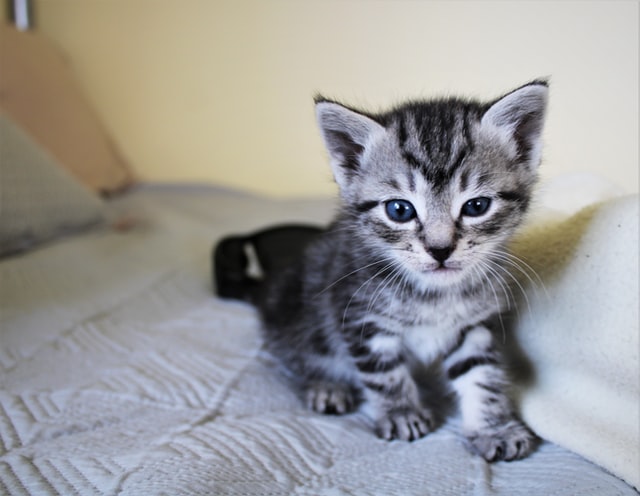
Credit: elaine alex
Silver tabbies have a distinct M-shaped stripe on their forehead. This feature is shared by all tabby cats. This marking is caused by a genetic mutation that controls coat color pigmentation.
The “M” marking is passed down genetically to all tabby cats from one generation to another. The marking is difficult to overlook since it’s positioned in the middle of the forehead, between and above the eyes.
Apart from science, there are also legendary and religious tales that try to explain the “M” marking on tabby cats.
The Christianity version has it that the letter “M” refers to Mary, the mother of Jesus, while the Islamic version has it that the “M” represents Muuzza, a tabby cat that is remembered for saving the life of Mohammed by killing a snake that crawled into his sleeve.
Ancient Egyptian legends record that the “M” marking on a tabby cat represents Mau in reference to how Ancient Egyptians called their cats.
#2 There Are Five Silver Tabby Patterns
Tabby is a term that describes a variety of different coat patterns. Silver tabby’s fur patterns differ distinctively from one cat to another.
The five tabby patterns common among silver and other tabby cats are:
- Mackerel
- Ticked
- Spotted
- Patched
- Classic
The Mackerel tabby, named after a fish with the same name has dark markings. This pattern is caused by a dominant gene and it’s the most common among tabby cats. Mackerel tabbies have dark narrow stripes along their backs, fishbone patterns down the side of their bodies and rings around their legs and tails. They also have dark whiskers, light chins, and dark fur on their back legs, feet and tails.
The ticked tabbies are also known as agouti tabbies. They have no stripes or spots but rather bands of dark and light colorations on each hair. They have little to no stripes on their coats except on their faces, legs, and tails. A ticked silver tabby is quite rare to find.
The spotted tabby cat is also known as torbie and she has bands of large or small spots on her coat. These spots that appear as incomplete stripes are made of loosely connected dots
The classic tabby is also called a blotched or marbled cat. A classic silver tabby cat will have dark circluer swirls resembling a bull’s eye against their silver background coat. This pattern develops due to a recessive gene. The classic tabby marking is highly regarded among breeders and cat owners because most classic tabbies are pure breed.
Patched tabbies are often called tortoiseshell tabbies. They are coved in patches and the markings are apparent on the legs and heads.
#3 Silver Tabby Cats Aren’t a Breed
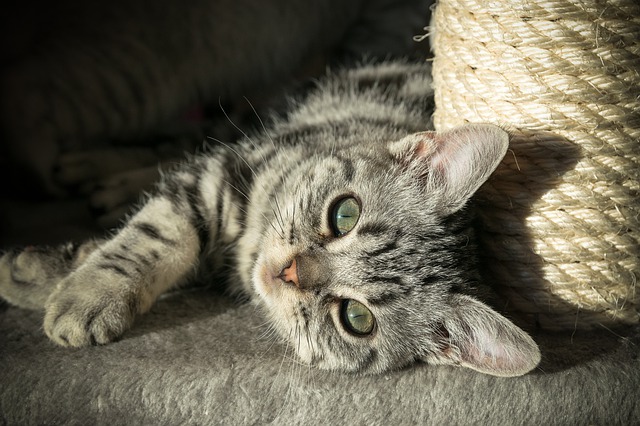
The word tabby refers to a coat marking and pattern.
Silver tabbies aren’t a separate cat breed but a category of cats with a unique color coat pattern. The coat of a silver tabby has dark stripes on a pale background. The dark stripes can either be tightly spaced, even spaced, or broken.
There’s a long list of breeds of cats with silver tabby coat patterns including British shorthair and Russian blue. Other cat breeds like the Maine coon, American Shorthair, Abyssinian, Turkish Angora and Siamese also come in a silver tabby coat. The swirls, dots, and stripes that characterize silver tabby cats are dark.
#4 They Have Gray or Red Pads
Tabbies are known to have brick red or gray pads on their paws.
All the pads will be of the same color for each cat.
#5 They Have a 50-50 Chance of Being either Male or Female
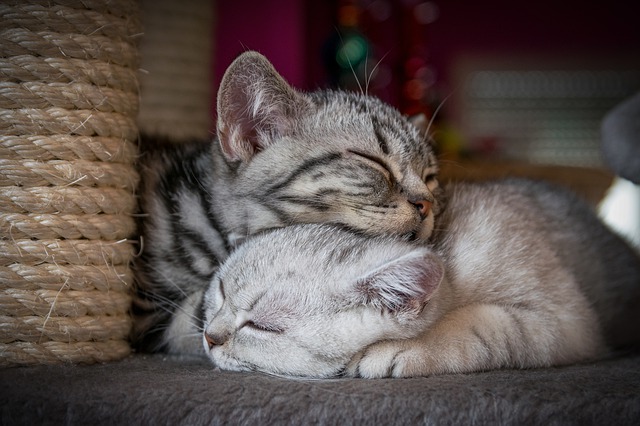
Male cats inherit their coat coloration from their mothers while female cats get their coloration gene from each parent.
Unlike orange tabbies which are mostly male, the offspring of silver tabbies have an equal chance of being male or female.
A silver tabby needs to inherit only one copy of the gene from each parent to give it a 50-50 chance of being either a male or female silver tabby.
#6 Your Silver Tabby Hairs are Black
The official color of a tabby cat is decided by looking at the blend of the feline’s stripes and background color.
If you look closely at the hair of your silver tabby cat, you’ll notice its black at the roots. It only appears grey due to the cat’s pigment.
Sometimes, the ground fur may have white roots resulting in a different category of silver tabbies like blue silver, cream silver and red silver.
A tabby cat with black stripes on brown fur is called a brown tabby. One with orange stripes on cream fur is called a cream tabby and one with gray stripes on a buff background is called a blue tabby.
#7 Tabby Patterns Are a Source of Camouflage
Many wild cats like tigers and leopards have tabby patterns. Tabby patterns offer excellent camouflage for survival in the wild. The tabby pattern helps wild tabby cats to hide in bushes and tall grass away from predators.
Similarly, the tabby coat acts as a camouflage for domestic cats making it possible for them to hide and sneak up to their owners without being detected.
#8 Silver Tabby Cats Are Quite Vocal
Silver tabby cats are more vocal than the average cat.
Since these cats are naturally social, they aren’t shy when it comes to sharing their opinions. They will communicate with constant meows when they want attention. They also tend to be chatty when they need petting or food.
#9 Silver Tabby cats are affectionate and playful

Credit: Melani Marfeld
Silver tabbies have become a favorite among pet lovers due to their intelligent and outgoing personality. They are also playful cats that get along well with family members of all ages.
They tend to be less independent thus require lots of human attention. Their curiosity also makes them great entertainers. They are constantly looking for new things to do and are always on the move or exploring around the house.
#10 The Origin of the Silver Tabby Pattern Can Be Traced To the First Domesticated Cats
Cats with tabby patterns were first tamed by humans’ over 1000 decades ago. The first domesticated cats like the African wild cat, the Asiatic wild cat, and the European wild cat were all tabbies.
These first cats were domesticated for companionship and hunting purposes. The cats were kept by humans to help guard their granaries and crops against rats. For this reason, tabby cats became common house cats. It’s estimated that half of the domesticated cats in the world are tabbies.


